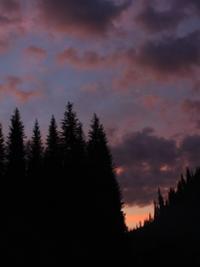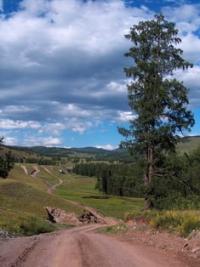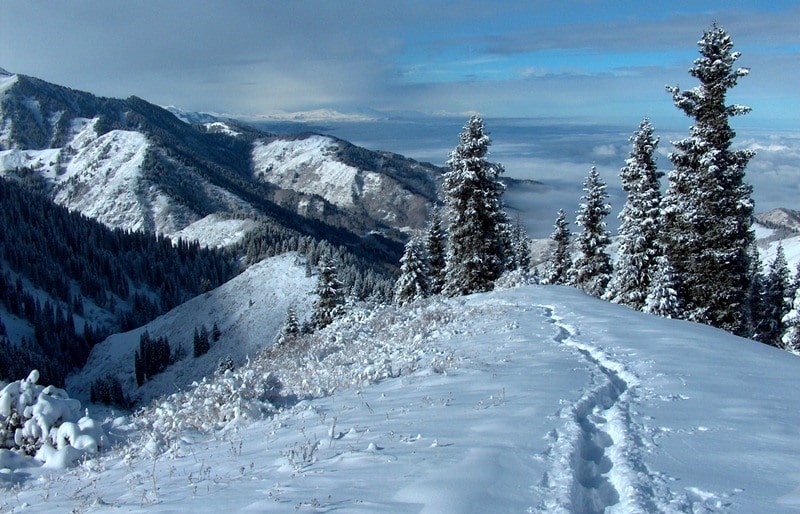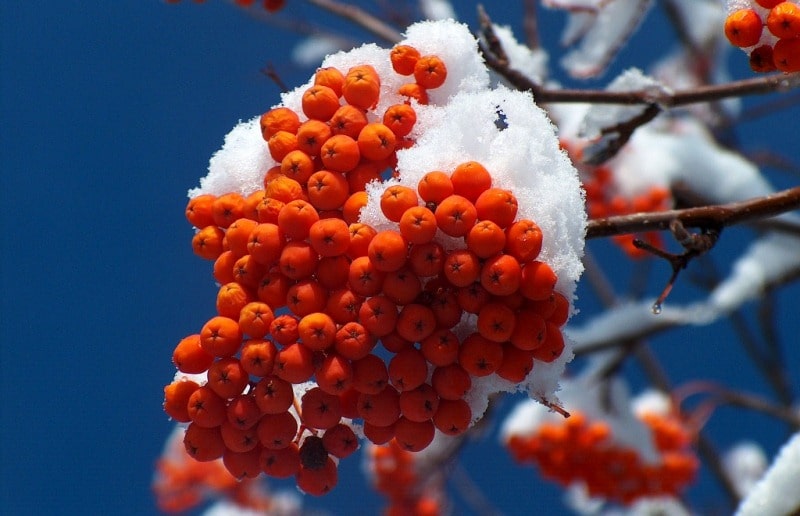You are here
Geography of West Altai Reserve.



Mountain hiking in Kazakhstan Altai.
“Nature encourages no looseness, pardons no errors”
Ralph Waldo Emerson.
Take a ride from Semipalatinsk to Ust-Kamenogorsk.
West Altai Nature Reserve is on border of various regions - mountains of Southern Siberia and Central Asia, extensive flat spaces Western the Siberian steppes and the deserts of Kazakhstan and Central Asia. The West Altai Nature Reserve covers an area of 86 122 hectares.
The reserve's terrain is representative of a mid-mountain range with gentle slopes. Only the central part of the Ivanovsky mountain range (Vysheivanovsky Belok, 2778 meters) is notable for its extreme alpine topography. 1
4 small glaciers on the tributaries of the Belaya Uba River cover a total area of 1.1 square km with an ice volume of 0.011 cubic km. Up to the forest border are small glacial lakes and brooks emanating from bogs.
The reserve could be divided in 4 zones: deciduous forest, mountain taiga, mountain tundra and subalpine and alpine meadows. The West-Altai National Nature Reserve is located at the North-Eastern border of East-Kazakhstan district on the territory of 2 administrative regions: Ridderskiy (former Leninogorsk) and Zyryanovskiy.
Big remoteness from the ocean and the high seas causes continental of climate with sharp the expressed fluctuations not only annual, but also daily air temperatures. Winter here long, cold with hard frosts, summer hot.
Often late spring and autumn early frosts. Hot summer day quite often is replaced at cold night. On average the annual air temperature 1.5 C that testifies to the big duration of the warm period (130 - 145 days). During the summer period comfortable weathers with air temperature within 18 - 24C prevail in the afternoon.
These weathers are observed since May 20 to the middle of September. Air temperature of the hottest month - makes July 16.7C. In the first decade of August frosts are already possible. The without frost period proceeds on average 57 - 94 days.
At the end of September temperatures through 0 °C are observed average daily. The winter is rather soft. Average monthly air temperature of the coldest month makes - 12.9C. At night falls of temperature fall to-18.8 C and below.
An absolute minimum - 46.7 C. The daily difference of temperatures insignificant and on average for December does not exceed 3.5C. By summer it increases to the territory of the area, occupying all other territory of the reserve, the thermal coefficient is equal to 1 - 1.5.
According to a meteorological station, the average annual amount of precipitation makes 1090 mm. Near the Ivanovo ridge according to E. N. Velisova (1969) at the absolute height of 2000 - 2800 meters above sea level drops out from 1600 to 2000 mm of rainfall a year, and their most part in summertime.
In the territory of the reserve it is possible to assume 1000 - 1400 mm, and in a mountain part it to 1800 - 2000 mm. Winter here more long, warm period short. The period with steady snow cover makes 220 - 240 days and proceeds since the end of September or the beginning of October until the end of April or the middle of May.
The maximum height of snow cover (more than 3 m), is observed near the Ivanovskiy ridge in the middle and the end of April. Average annual speeds of wind 3 - 4 m/s., with a maximum in January and a minimum in July.
Sometimes at fohn, the speed of wind reaches 15 - 20 m/s. Winds of northern points have the smallest repeatability, repeats the others of the directions is approximately identical (Velisov, 1969).


Authority:
"West Altai Nature Reserve". Bastanogova L. Ishkov E. Reserves of Central Asia and Kazakhstan. Almaty, Kazakhstan, 2006. Under the general edition of Roman Yashchenko. The international union of conservation of IUCN - The World Conservation Union. Physiographic features (across Kerteshev, Vagapov, Yashchenko, 2001). Reserves of the USSR. Reserves of Central Asia and Kazakhstan. Moscow "Thought", 1990.
Photos
Alexander Petrov.







